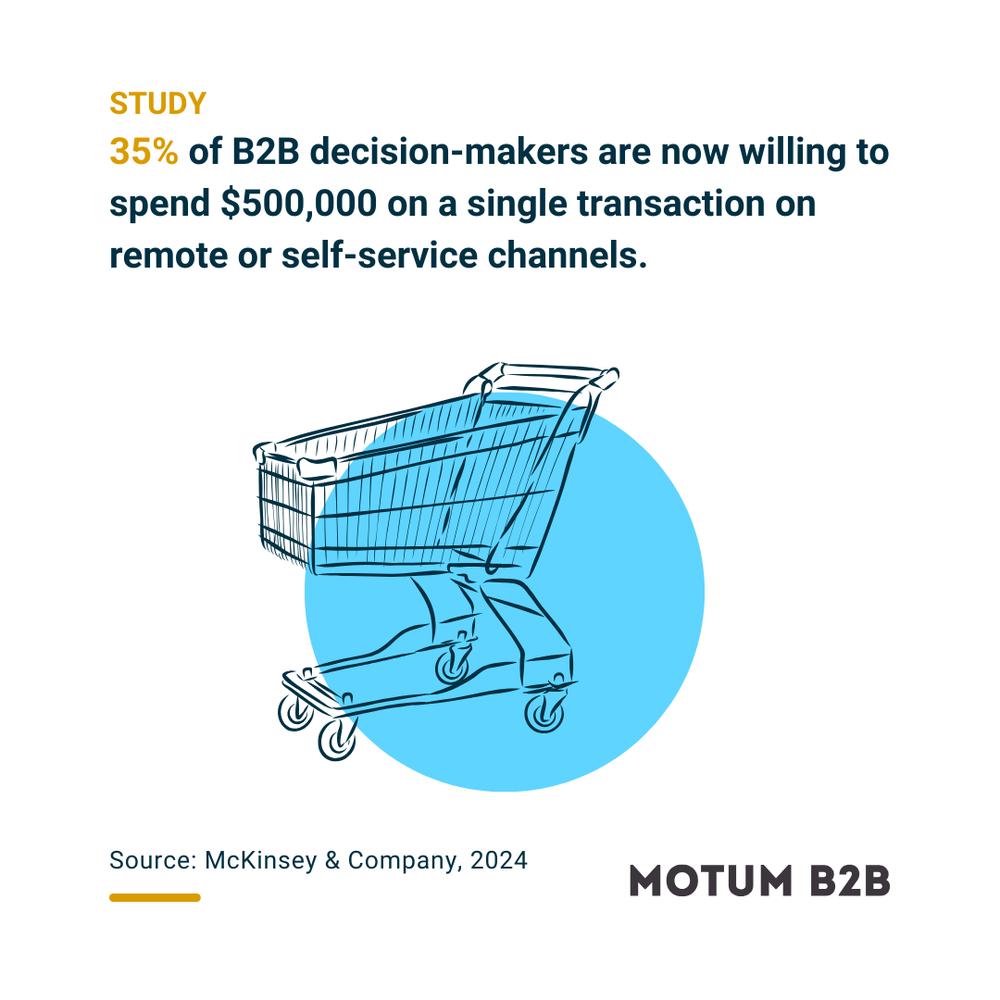5 questions to ask before launching a B2B e-commerce site
So, you’re thinking of taking your B2B business online? Here's what you should know.

B2B e-commerce is on the rise. Spurred by changes in both the B2B sales funnel and buyer behaviours, a 2023 study found that 74% of B2B businesses expected their websites to generate more than 50% of sales that year.
As online storefronts become increasingly important for B2B businesses, we outline some of the things you should know before opening the digital doors to your online store.
1. Is your storefront seamless?
For any customer, a frictionless experience that allows them to find, browse, and purchase products with as few issues as possible is paramount.
Remember, you’re dealing with decision-makers who are B2C consumers in their spare time. As we said in our blog post about PWAs, we’re at a time when Gen Z and Millennials make up 64% of business buyers and want online B2B experiences that align (if not surpass) the standards they’re used to.

A good way to test your store’s experience is to sit down and take the buyer’s journey from start to finish, starting at different places in the funnel. As you do, note down each and every point of friction. Make sure CTAs are clear and accessible, load times are quick, and specifics like product recommendations are accurate and working as intended.
2. Does it have all the information a customer needs?
Something else to look for is whether your site has all the information a customer needs. While you want to match the seamlessness of your customer’s favourite B2C site, the specifics are going to be different for B2B.
Are products organized into categories that make sense? Are the specs clear and accessible, and is supporting documentation and regulatory material easy to find? Do images clearly showcase what the product looks like? Is pricing transparent and easy to understand? Is there a way to contact an expert or book a demo if a customer has a specific question? These are all questions you should be thinking about.
3. Consider privacy and data
E-commerce and data go hand in hand. Not only should your organization leverage it to provide a better, more personalized shopping experience, but 86% of B2B customers are expecting companies to be well-informed about their personal information during a service interaction.
With data comes a responsibility to consumers, particularly around privacy, security, and trust. In our feature on dealing with first-party data, we talked about the trust gap between consumers and businesses, with only 33% of Americans believing companies are using their data responsibly.
Consider this your reminder to make sure you’re being transparent about not just how you’re capturing data but how you’re using it.

4. Understand its place in your omnichannel strategy
According to a study from McKinsey, B2B customers are using ten or more channels to interact with suppliers (as opposed to five in 2016), and 94% see a B2B omnichannel strategy being as effective, if not more effective, than it was before the pandemic.
To get your e-commerce experience right, it’s important to see it as part of a multi-channel effort. Think about how you’re using social media, emails, and even physical tradeshows and events to cater to different customer needs and consider the part your storefront plays in that strategy.
If you can get it right, customers are willing to spend big money. According to the same McKinsey study, 35% of B2B decision-makers are now willing to spend $500,000 on a single transaction on remote or self-service channels.
5. Prioritize personalization
In 2024, buyers don’t just prefer an experience that’s personalized, they’re expecting it. E-commerce sites are packed with data spanning customer behaviour, preferences, and financial patterns. Combined with data you’ve already gathered from your website, social media, and industry analysis, there’s a lot you could be doing with personalization.
As you get ready to press go on your e-commerce site, you could set up emails to be sent to someone at a specific time of their buying journey, like when a consumer abandons their cart or at a key moment in the funnel. You could also leverage data to suggest related products and services, or curate offerings based on recent search terms on your website.
